“The ultimate test of man’s conscience may be his willingness to sacrifice something today for future generations whose words of thanks will not be heard.”— Gaylord Nelson
There are so many ways we can minimize our impact. Here are a few things that we practice here at Outdoor Herbivore.
Clothing and Gear
- Purchase, sell or swap used outdoor gear at Gear Trade (USA).
- Buy less clothing by purchasing higher-quality items that will last longer. Look for lightweight, compressible and durable fabrics. Items made or blended with polyester, nylon, hemp, spandex (lycra), or wool are excellent choices. These materials will provide strength and flexibility, are less subject to fading and shrinkage, offer better suitability for athletic wear (lower water retention), and extend the life of the clothing.
- When there is a choice between purchasing material made of virgin material versus recycled, purchase the recycled! This tells the company you support the cause and encourages further adoption across other products and manufacturing companies. Outdoor clothing manufacturers, such as Patagonia, Marmot, GoLite, and Sierra Designs use recycled fabrics.
- Donate to charity any clothing you no longer wear. Items unfit for donations, such as socks with holes, disintegrated underwear, faded t-shirts, and other worn-out threads, can be recycled into dust cloths, grease cloths, or garage rags. Some outdoor product manufacturers listed above will take back your used items.
Food
- Eat a diet rich in plants. Meat is a very carbon-intensive commodity. The United Nations Food and Agriculture Organization has reported that the meat industry is responsible for 18 percent of global greenhouse gas emissions through fertilizer use, animal manure, and the energy required to transport food and meat. Pasta, beans/lentils, nuts, oats, and rice are efficient to produce and are excellent sources of calories, fiber, and protein.
- Buy organic foods as much as possible. Organic soils capture and store carbon dioxide at much higher levels than soils from conventional farms. If we grew all of our corn and soybeans organically, we’d remove 580 billion pounds of carbon dioxide from the atmosphere, according to cutco2.org.
- Grow a chemical-free garden. What can surpass plucking a tomato by merely opening the door and walking a few feet in your slippers? No retailer can beat that level of freshness.
Compost
As documented by EPA, yard trimmings and food residuals constitute 23 percent of the U.S. waste stream. Composting offers many environmental benefits, such as enriching the soil, preventing erosion, and diverting landfill waste.
|
| 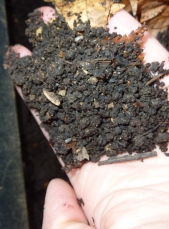 |
We compost food waste. To make it easy, we keep a small pail under our sink and fill it with our kitchen waste. After a few days, we’ll empty the kitchen pail to the outdoor compost. If you don’t have space for an outdoor compost, you can also use a smaller indoor system. Most indoor composting systems require you to purchase worms and can break down compost in as short as three weeks. There is no need to buy worms for an outside composter. The worms will find your stash and establish a village, but it will take longer to develop. Compost is a nutrient-rich soil, perfect for vegetable gardening, houseplants, and flowers. Don’t have a garden or houseplants? Donate the soil to a neighbor/community garden.
What can be composted?
- Indoor waste such as rotting produce, vegetable/fruit peels, coffee grinds, paper towels, food-soiled boxes, shipping boxes, and shredded documents.
- Yard waste such as leaves, sticks, and lawn clippings. You can use it as mulch in the spring.
- See also getting started composting.
Reduce Plastic Bag Use

Plastic bags can’t be refused entirely, but we can certainly manage without plastic shopping bags. Unfortunately, until we eliminate petro-based plastic bags, they will continue to trash our oceans and landfills and cause harm to wildlife. Some things you can do include –
- Cook camp food the traditional way inside a cooking pot or reusable container. When in a group, cook the same meal for the entire group and serve it in individual bowls. Forgo the bowl and eat directly from the cooking pot when hiking solo to reduce waste. Yes, the clean-up will require rinsing out the cooking pot and utensils. Frankly, the clean-up is no big deal — it takes just a few minutes if you purchase dried (dehydrated or freeze-dried) meals since you are only rehydrating pre-cooked meals.
- Don’t want to clean your camp pot? Purchase several durable resealable bags to rehydrate meals and eat from. Wash and reuse these bags instead of purchasing multiple individual camp pouches. Make sure the bags you buy are suitable for food use and capable of withstanding near-boiling temperatures. Standard zippered sandwich bags won’t work because their softening point is much below 212 degrees. Some backpackers use quart-sized freezer bags or zippered food-saver-type bags for this purpose.
- Buy products with minimal to no packaging in the largest size that you will use. This saves on the number of materials recycled or thrown out; less packaging can also be cheaper.
- Purchase items in bulk bins. Packaging is a big part of food costs, and many manufacturers place more emphasis on glitzy packaging versus what is inside. Just like mom said, “it is the inside that counts!”
- Use reusable grocery bags. The foldable branded “chicobag” stuffs down to 3 “x4” and weighs less than 2 oz, making it suitable to store in your bike pannier/backpack/pocket/purse/glove box those times when you don’t have room for the larger canvas reusable bags.
- Use reusable food storage whenever possible. You probably already carry a refillable water bottle, but you can also reduce your plastic bag usage for food items. For instance, when traveling with a sandwich, we’ll wrap it using the Wrap-N-Mat made by reuseit. The nice feature of the wrap-n-mat is that it opens flat into a placemat, which is great for picnic tables in public spaces. We prefer using mats over rigid plastic containers since they are lightweight and do not take up extra space. The regular-size mats fit well for sliced bread-type sandwiches. The downside is that the food can get crushed.

The wrap n mat at a picnic table Reuse food-grade bags – produce bags, bread bags, zipper bags, etc. Bread bags are great for packing out a sandwich for a day hike. Wash them out if they are dirty and air dry them by propping open. Tip: Find space in the freezer to store dirty bags and clean them all at once. This keeps them out of the way and mold-free while waiting to be washed.
- Reuse plastic grocery bags as trash liners for small garbage containers. Gather your kitchen garbage first, then dump the contents of the smaller containers into the larger kitchen bag, leaving the small containers with the grocery bag liner intact for several more uses.
- Taking the plastic grocery bag as trash liners one step further: invest in a shorter and narrow trash bin for your kitchen (perhaps you can stow dry trash in the old bin and relocate it to a laundry room, garage, or shed..?) which will fit the grocery/retailers bag. The smaller bin will be adequate if you start composting since you’ll have much less waste.
- Reuse slightly dirty produce bags for gloves. Great for messy jobs like putting bird suet out and pet clean-up. But, ask yourself if you needed that produce bag, to begin with. Most vegetables don’t need them and have rubber bands to keep them intact.
- Consider purchasing BioPlastics for trash bags. Unlike petro-based plastics, BioPlastics are made from the starch of plant sources such as corn, potato, and soy. A potentially renewable alternative to petroleum-based plastics would have the long-term benefits of reducing global warming pollution and our dependence on fossil fuels.
Tips for storing plastic bags for reuse
- Use an old tissue box to store produce bags.
- Stuff produce bags in a tissue paper roll to keep bags neatly stored in your vehicle.
- Purchase a bag holder that hangs on the wall.
- Don’t let a retailer give you a bag.
Stove Fuel
- Purchase refillable stoves that do not use canisters. If you own a canister stove, you can puncture the canister to recycle it. See comparing backpacking stoves for more information on what to look for in a stove.
- When backpacking, conserve fuel by purchasing dehydrated or freeze-dried meals. Shut off the stove after the water boils. Allow the food to soak with the lid tightly closed in the boiling water. A pot cozy will speed up the process even more. Eliminate the stove and fuel by taking no-cook meals.
Water
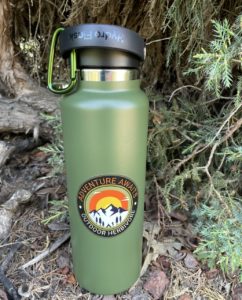 Water (not oil) is our most precious resource on Earth. All living beings need water to survive, and water shortages are already a problem in many regions. We must adopt creative practices to conserve and allocate water in practical ways. There are a few things you can do at your residence.
Water (not oil) is our most precious resource on Earth. All living beings need water to survive, and water shortages are already a problem in many regions. We must adopt creative practices to conserve and allocate water in practical ways. There are a few things you can do at your residence.
- Collect rainwater by connecting barrels to your downspouts and water plants from the rain barrel. Own a fish tank? Water household plants, gardens, and flower beds with the “dirty” nutrient-rich water.
- Eliminate plastic water bottles. Tap water is often just as clean as the alleged “purified spring” or “artesian water,” which 40% of the time is only filtered water from a creek/lake/river source flowing through local plumbing, the same source as your tap water. Use an RO system or fridge filter for a taste superior to bottled water. If your refrigerator does not provide filtered water, you can easily install an under-sink filter, faucet filter, or whole-house filter and fill it into reusable bottles.
- Make your coffee. Take a reusable coffee cup when not at home. When traveling, give your thermos to the clerk to fill instead of taking a to-go cup.
- Look for leaking faucets and pipes in restaurants, parks, and public spaces and report them. Ever notice locations with underground irrigation that spray water into the streets? Report any water waste. Refrain from assuming someone else has already called in for a repair. Other people often think the same, resulting in several days’ worth of treated water recycling back for another treatment.
- Install low-flow showerheads and low-flow toilets. These changes can cut your water bill use by half and save you money on your water heating bill.
Plant Trees
- Trees reduce carbon emissions by taking in carbon dioxide and breathing out oxygen. They also provide cooling in hot environments, energy conservation, are beautiful to look at, provide privacy, muffle noise, and offer a habitat for wildlife. Make sure to select a tree native to your area.
Transportation
- Burn Fat, Not Oil! Replace some short trips by biking and walking. Biking and walking reduce noise and air pollution while improving health. Each gallon of gas burned releases approximately 20 lbs of CO2 in the air.
Junk Mail
- Check http://stopjunkmail.org for help on how to stop receiving junk mail.
Batteries & Electronics
- Use rechargeable batteries. Consider the newer hybrid nickel-metal hydride (Ni-MH) cells, which hold a charge longer when not used.
- Recycle rechargeable batteries that no longer have a charge, such as those used for tools, laptops, and phones, by going to call2recycle.org to find your nearest drop-off location.
- Whether you’re interested in turning your electronics in for cash or donating, look around to find a program that will offer the best incentive for your cause. Try Usell.com first, where you can type in your brand/model, and it will identify possible options for resale and recycling.
- Donate used cell phones to charity. NCADV (National Coalition Against Domestic Violence) makes it easy to donate used cell phones – print off the shipping label and mail your phone, or find local charities near you at americancellphonedrive.org
- Recycle used phones or electronics at participating retailers, such as Ace Hardware, Lowe’s, Office Depot, and Staples. See also earth911.com
- Sell or donate various electronic devices for cash – usell.com or gazelle.com
Join Causes
- Support the causes you believe in. Some charities have more value than others, and some are fraudulent. Check charity navigator for charity evaluation and ratings.
Reduce and Eliminate
Shifting towards non-disposable products designed for long-term use and reducing our consumables (recyclable or not) offers the most benefit for the environment. Meanwhile, we should all practice constructive use of our waste to lessen the environmental impact.
What is one action you have adopted that you think will make a major difference to the environment?
Related Posts:
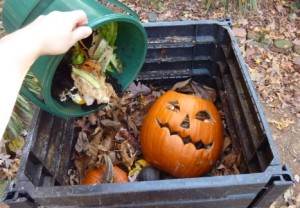
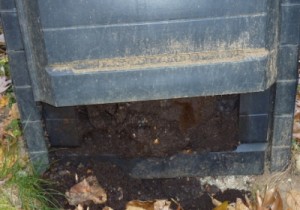
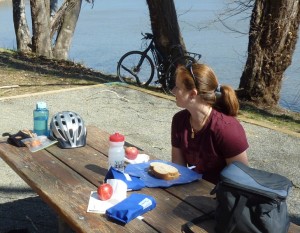
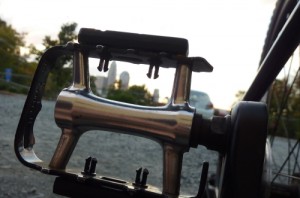
One thought on “Tips for a Lighter Footprint”
Good ideas here. That is a scary looking pumpkin in your compost.